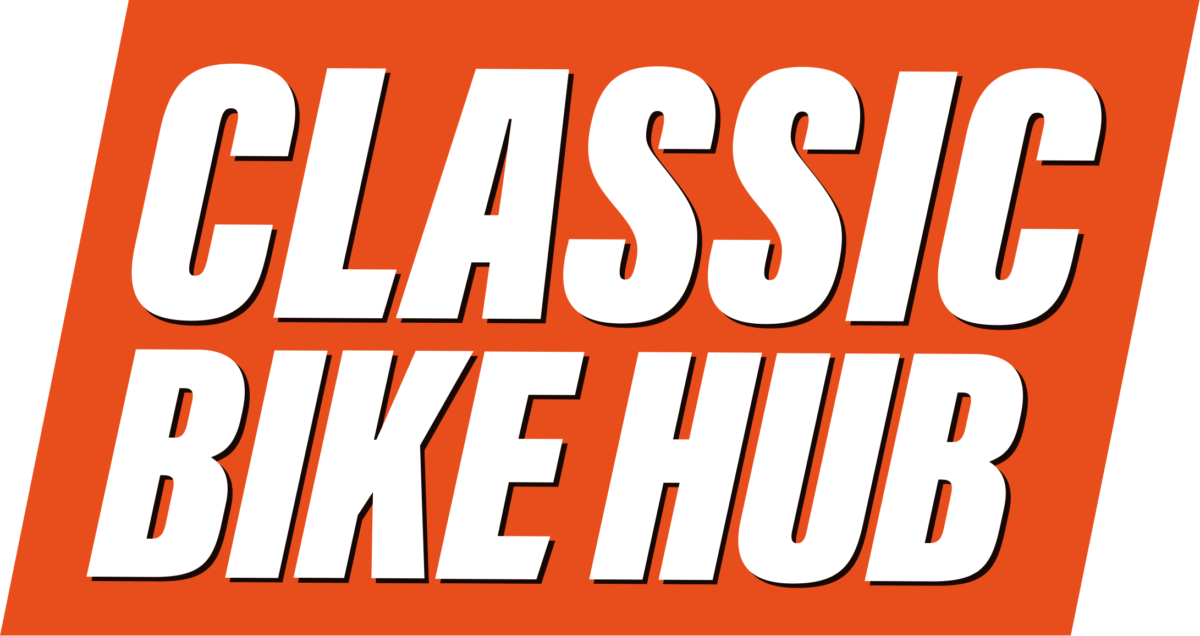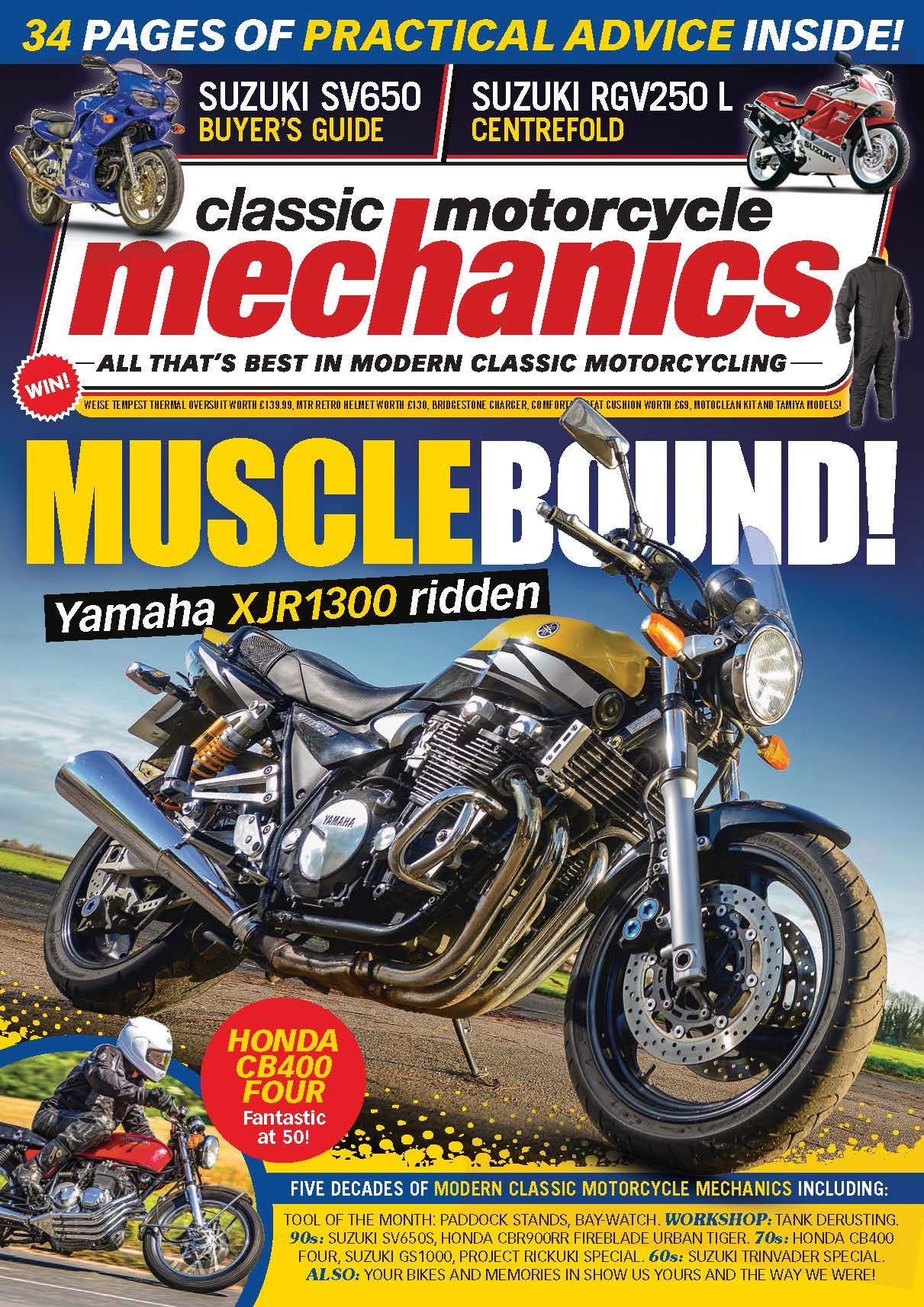Amazing to think that this machine is not far off 20 years old –just look at it! Goes well, too. Bertie Simmonds makes the case for the RR-6 being the best Blade ever…
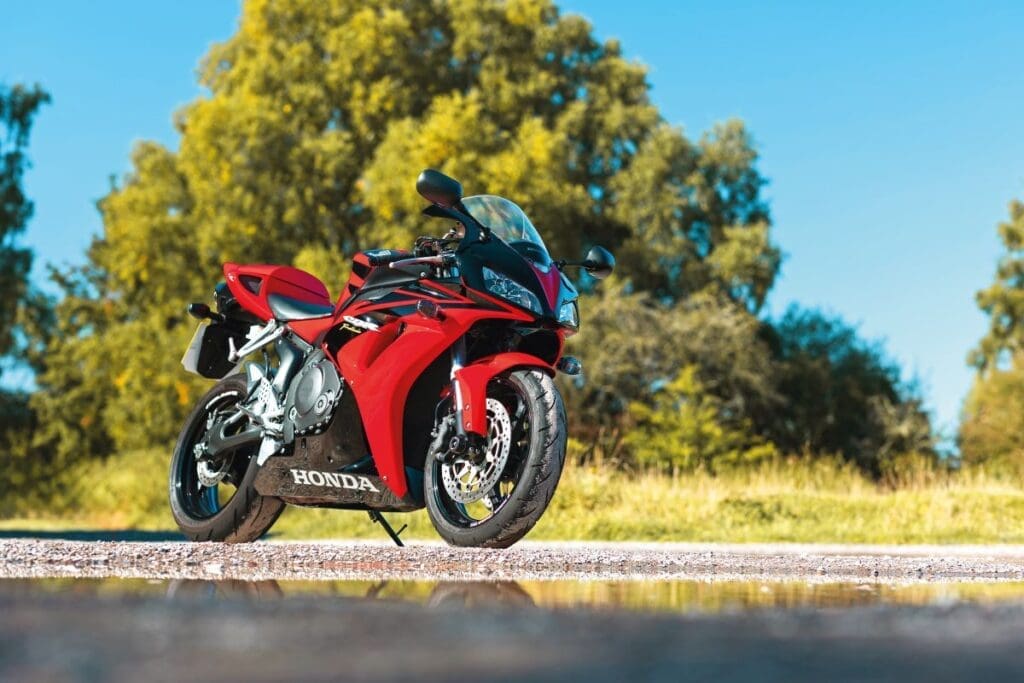
Words: Bertie Simmonds Pics: Gary Chapman, Bertie Simmonds Collection , Honda/2SNAP
It’s interesting to see this gleaming red and black Honda CBR1000RR-6 sparkle in the sunshine… and it’s amazing to think it is now 19 years old.
Enjoy more classic motorcycle reading, Click here to subscribe to one of our leading magazines.
This bike I am about to ride today is, for me, the best Fireblade ever built. Now, I know that some wouldn’t consider a bike so ‘young’ to be a classic – but it surely is.
And (I also know) that the original machine or sub-litre models are more many people’s ‘thing’ so please hear me out. But first, a small history lesson in how we got to the refinement of the RR-6. Please be seated…
Honda had been king of the big sports-bike category since 1992 with the game-changing CBR900RR FireBlade, but 1998 saw things change radically. Yamaha’s YZF-R1 of that year was almost as big a leap forward as the Blade had been six years previously and that year’s CBR900RR-W just wasn’t able to compete, not just because it was 80cc shy of the Yamaha, but because the R1 looked so damn good in comparison…
1998 rolled into 1999 and the W was replaced by the identical X-model Blade. 2000 saw the 929cc FireBlade released and (at last) in came a 17-inch front wheel and inverted front forks. 2002 would see chief designer Tadao Baba’s final FireBlade – the 954cc version – but, while it was a well-balanced package, it was still losing out compared to the now updated R1 and 2001’s Suzuki GSX-R1000 K1. It seemed as if between 1998-2003 Honda had taken a knife to a gunfight… Well, okay, a blade.
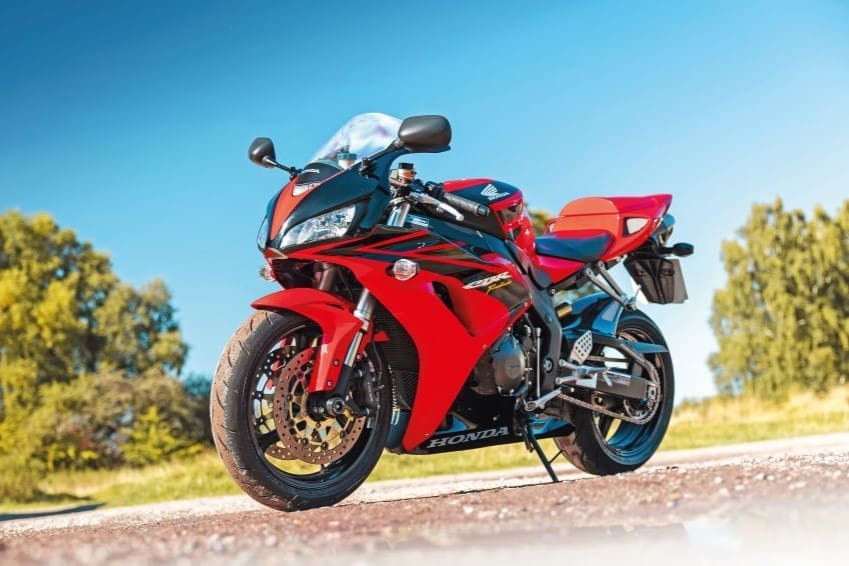
More capacity…
Things would change for 2004 and part of that change was inspired by a race machine. Out on the tracks Honda had been dominant with their 2002-on MotoGP machine – a four-stroke 990cc V5 called the RC211V, which replaced their NSR500 twostroke.
While the Fireblade’s engine would be an inline four-cylinder (not a V5), the new CBR would share some of the ‘look’ and chassis advances of the MotoGP bike.
Firstly, you’ll note the lack of the capital ‘B’ in Fireblade now. That was because the B was retired along with Baba-san, who was no longer heading up development. For the new CBR1000RR Fireblade, Kunitaka Hara took the design helm. He said: “We really wanted the thinking behind our RCV211V to be part of the 2004 Fireblade, as we wanted a racer to be able to win on it. But it still needs to be a Fireblade at heart – and that means it needs to beappreciated by a wide variety of riders.”
The press pack for the 2004 machine (launched at Arizona Motorsports Park in December 2003) rammed this home as it was littered with pics showing the similarities of the new Fireblade, with naked and clothed shots of both the Fireblade and the RCV side-by-side.
Much of the later RR-6/7s’ architecture was similar or the same to the RR-4/5s, so let’s delve in. Honda wanted to keep the new motor as narrow as the previous version, so they kept the same 75mm bore, but increased the stroke by 2.5mm to 56.5mm, which pushed capacity up to 998cc. Honda moved the starter motor, stacking the transmission gears and bringing the angle of the cylinders forward by just two degrees. This meant that the engine was barely bigger than the 954cc powerplant that preceded it. Another benefit of this was that the swingarm could be made longer to increase both stability and better application of power to the road.
The engine could rev higher than before in part thanks to new forged pistons, moving in bores now coated in a friction-reducing material. Valve angles were narrowed to produce a slightly flatter squish area while valve sizes were the same as those on the 954cc FireBlade. Also the fuel-injection system was updated for the 2004 model. The FI now had two injectors per cylinder, with one placed in the throttle body as was normal and the other in the air-box upstream of the intake bell-mouth; this one kicked in at high rpm. The exhaust would exit under the seat – like the MotoGP race machine – and power would be a claimed 170bhp.
Other MotoGP tricks included the use of die-cast sections of the frame extended from the headstock, wrapping the motor in a diamond shape to increase both strength and rigidity.
Suspension-wise, you had 43mm inverted Showas and a rear Pro-Link shock with the linkage in the swingarm. Brakes were radially-mounted Tokico four-pots on 310mm discs. Looks-wise, the CBR1000RR of 2004 shared similar aesthetics to the 2003 CBR600RR’s, which was also directly influenced by the MotoGP machine – Honda’sintentions were clear…
The 2004-2005 model of Fireblade was well received and considered a well-balanced sports-bike. Despite being up against the mighty ZX-10R, Yamaha YZF-R1 and Suzuki GSX-R1000 models, it could almost be considered the ‘thinking person’s litre-class sports-bike’, but things were going toget better.
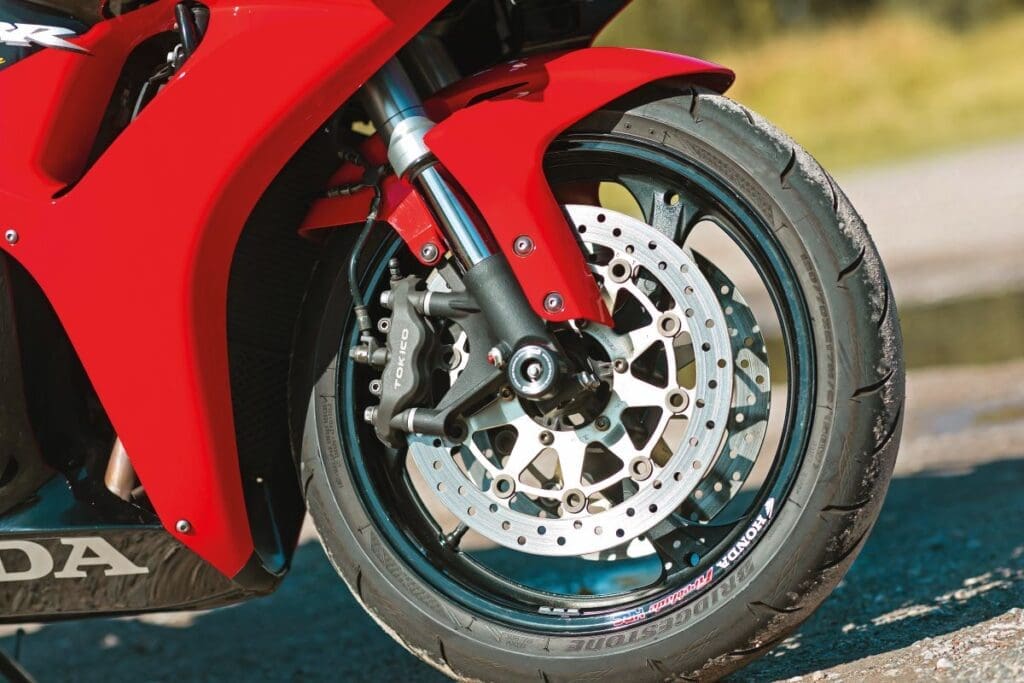
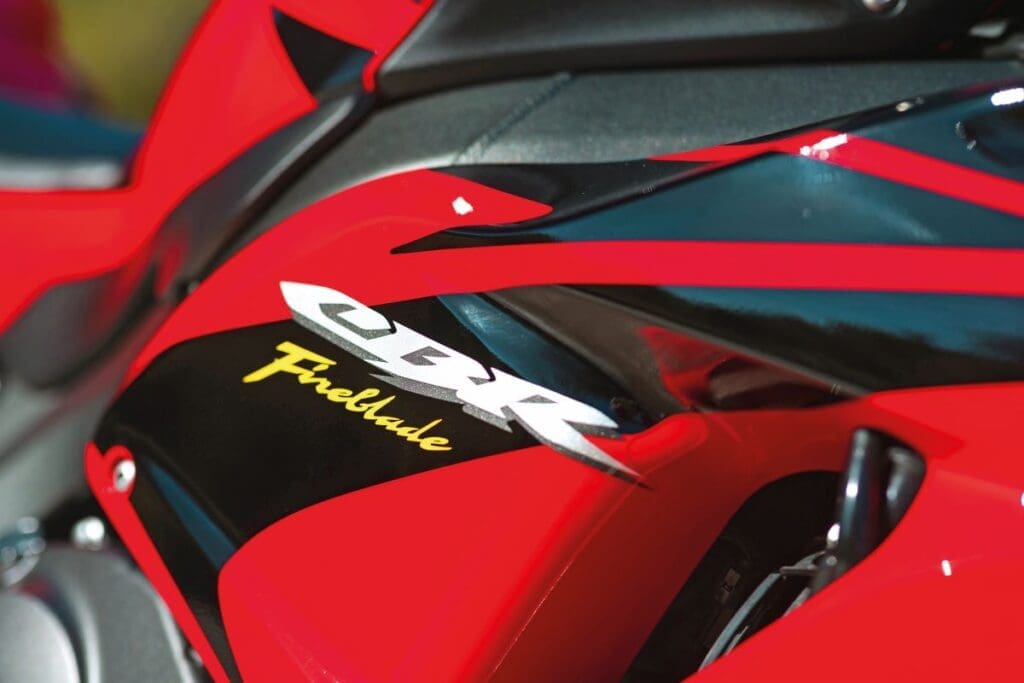
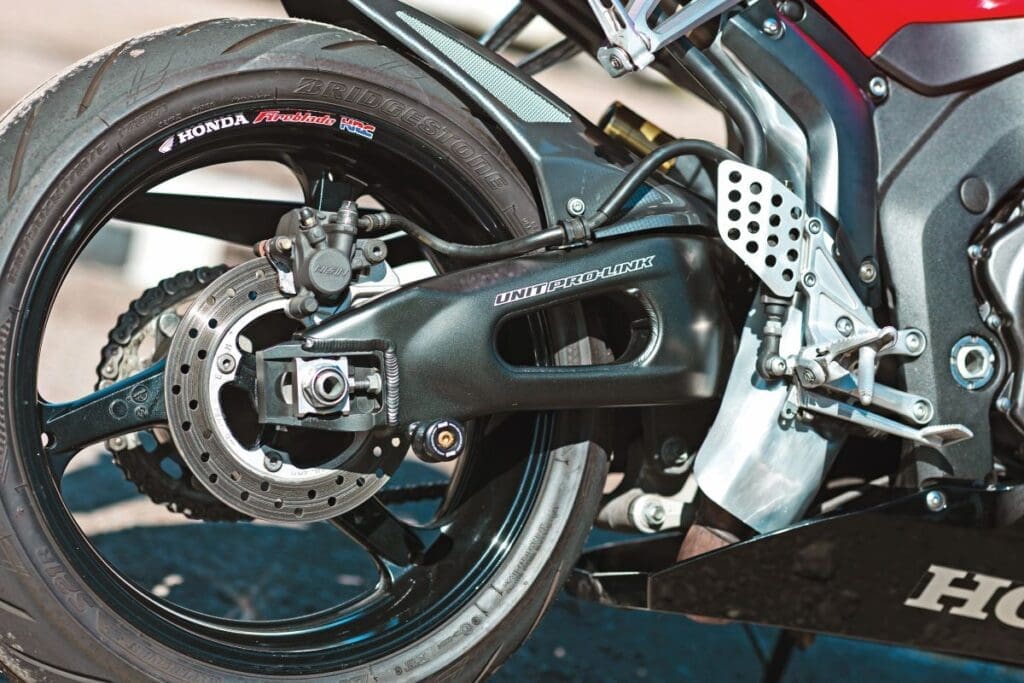
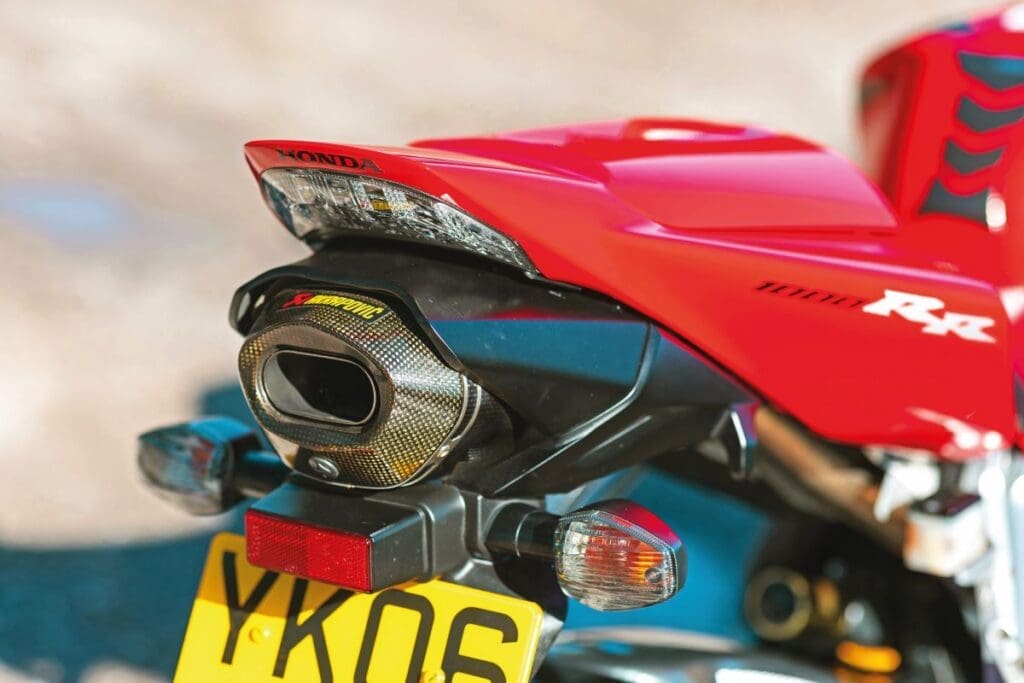
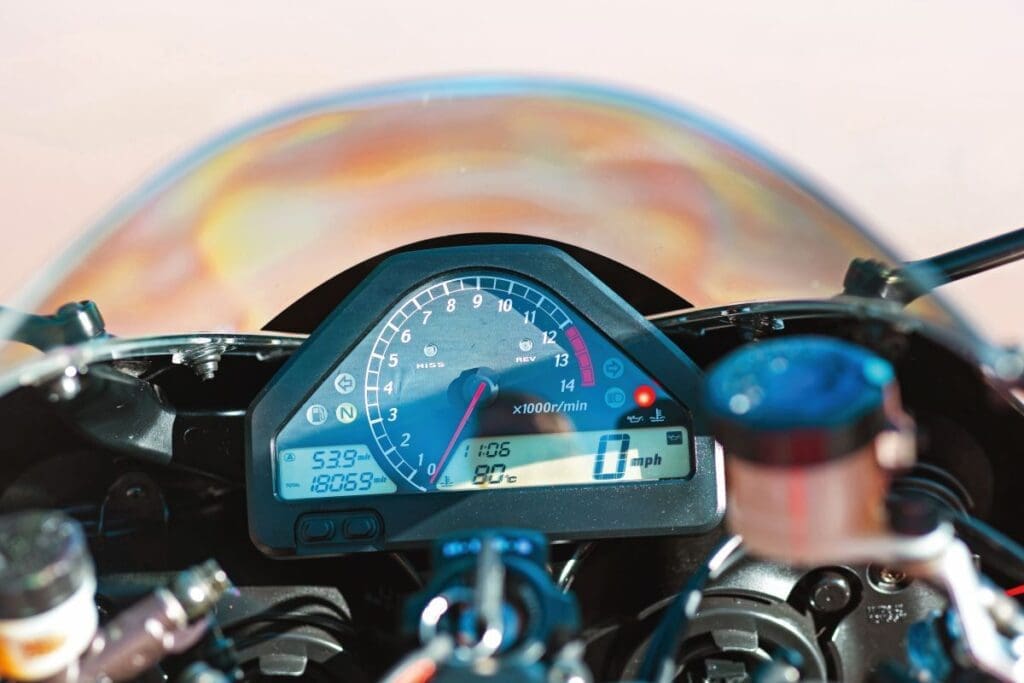
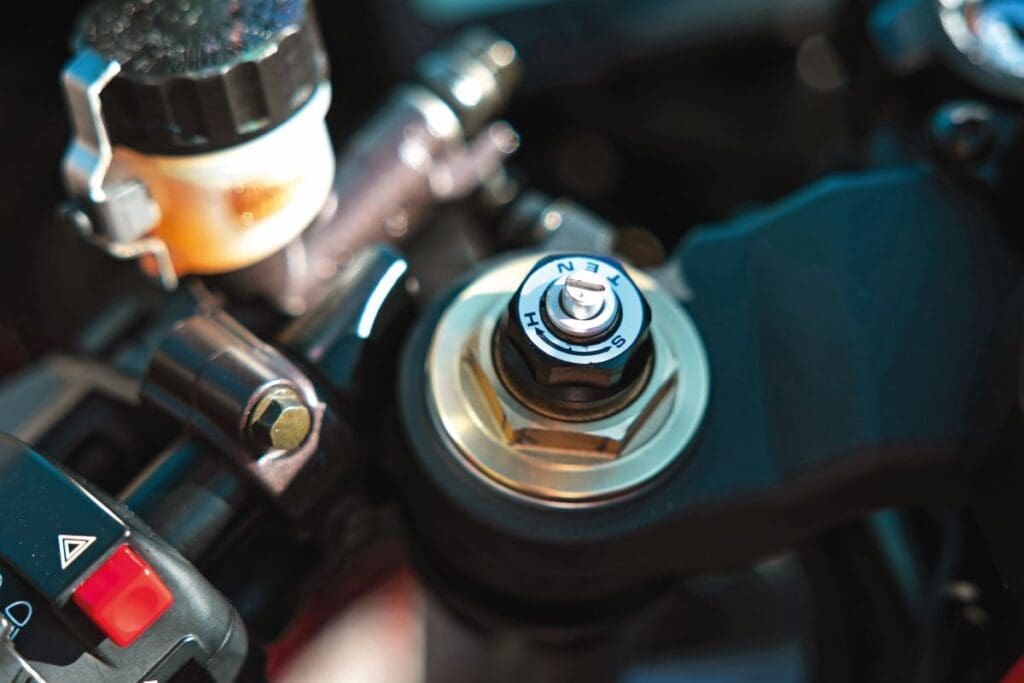
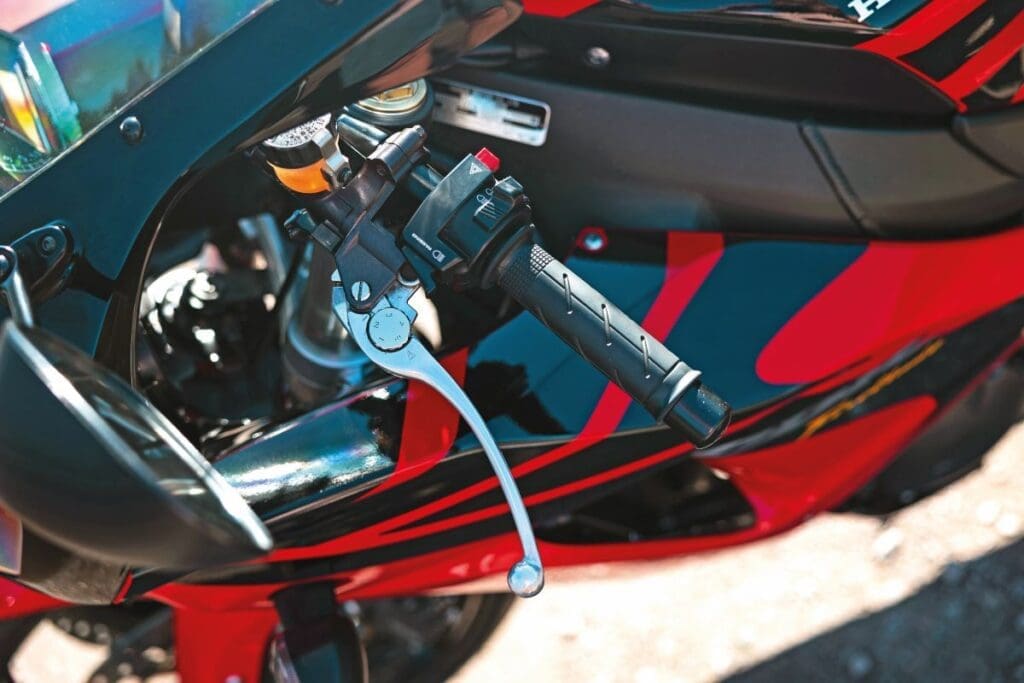
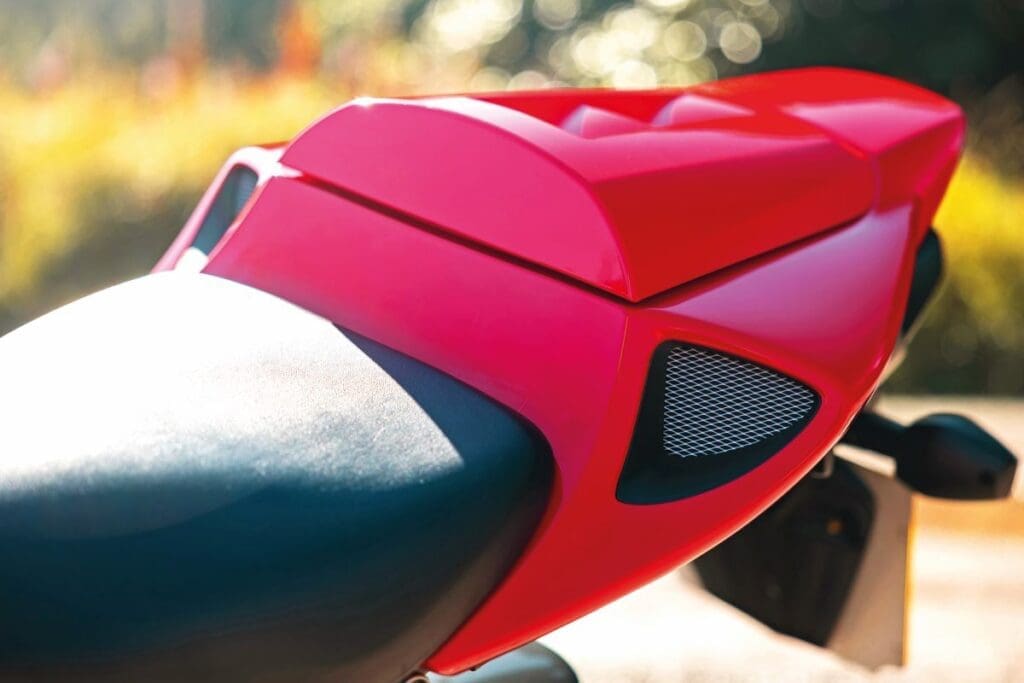
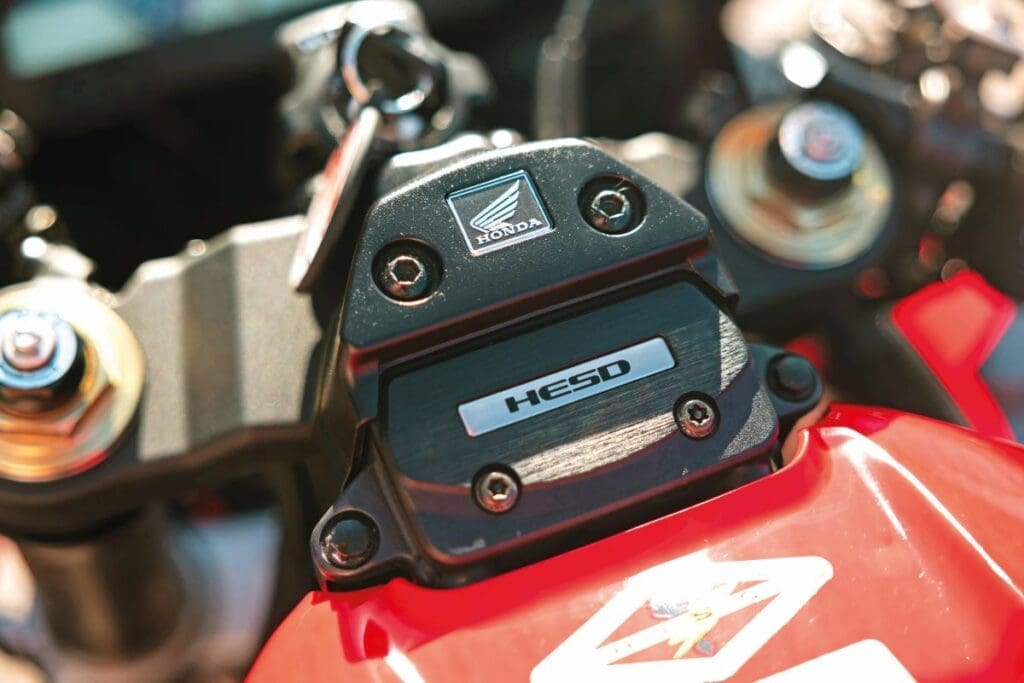
More refinements
The RR-6 model looked so much like the previous incarnation, you’d be forgiven for thinking they were one and the same: but the differences were many.
In the engine the rev-ceiling was increased with the aid of dual-concentric inlet valve springs which had been developed on the HRC factory British Superbike Fireblades. The cams in the motor were now 450g lighter and the crankshaft was stronger but was the same weight as the previous version. Reshaped combustion chambers helped increase the compression ratio from 11.9:1 to 12.2:1, while the motor also had new-shaped intake ports and bigger exhaust ports. Overall, the redline was up by 550rpm to 12,200rpm.
Weight was also shaved from the chassis. The first litre-class Fireblade tipped the scales at 179 kilos and Honda claimed that three kilos had been saved with the RR-6. Examples of weight saving included thinner brake discs (by 0.5mm, but rotors were now larger at 320 not 310mm) which saved 300g, 700g was carved from the new radiator (as well as by lighter engine hoses), and 1.4 kilos in total from the full four-into-two-into-one exhaust system and cat. Even the ECU (suitably updated) was pared back by 100g and, while the front forks and rear shock were the same as before, Honda technicians managed to shave 18g from the pre-load adjusters on the forks! Power was identical to the previous version – claimed at 170bhp @ 11,250rpm – but it was the other subtle changes that added up to a bigger difference overall. Two millimetres of reduction in trail may not have been noticeable to many of the journalists at the Qatar launch, but Ron Haslam reckoned he could feel the quicker turn in…
Another change, this time to lower the gearing, meant that the bike felt much livelier in the low to mid-range and, while it did indeed look very similar to the previous version, the bodywork was slimmer and the overall look a touch more aggressive. The colours schemes added to the overall look, too… with clean ‘Iron Nail Silver’ joining a butch overall black and the red with black wing scheme you see here in these pictures.
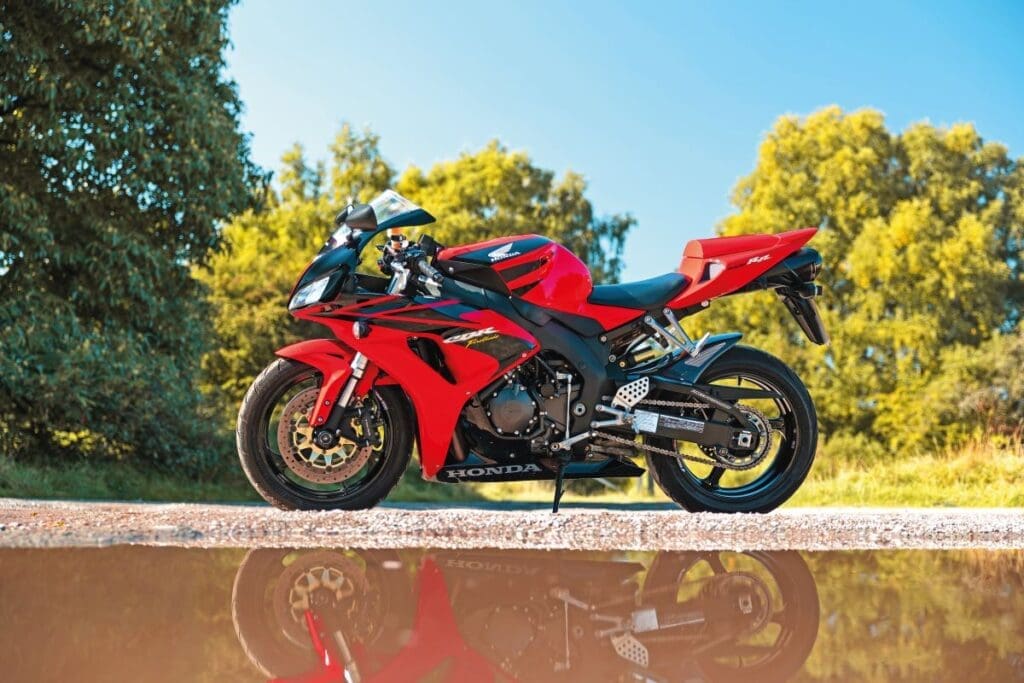
Saddling up…
Approaching this model of Blade and you can’t help but think this could be the previous iteration. Normally, the easiest way of sussing out the two would be the colours, the swingarm (black on the later ones) or the end can: the RR-6/7 had a twin-exit can (rather than single exit) which was rounder – this machine has a saucy Akrapovic, which I can’t wait to hear… This bike also has the cowling with racy vents rather than a pillion pad. To be fair, while I’ve taken many a pillion on an RR-6/7, this model of Blade was perhaps the first where you really didn’t want to bother going ‘two-up!’
Swinging a leg over that pillion cowl (careful, don’t scratch it) and you’re welcomed by the familiar cockpit. The rev-counter dominates (with a 12,200rpm red-line) with a HISS ‘Honda Ignition Security System’ light and REV shift-light. In the LCD screen at the bottom, you’ve then got your A/B trip and odometer on the left and clock/temp centrally and speedometer. Neutral, fuel, high-beam, oil and left and right indicators flank the tacho above. It’s a clear, crisp display from a time before colour touchscreens on two-wheelers I like it as all the information you need is there. Of course, the other thing that you’ll notice is that HESD ‘Honda Electronic Steering Damper’ but more on that later…
Firing up the Blade, there’s a lovely, throaty roar from the Akra end can just back from your botty. Hmmm… I never ran one of these with an end-can other than standard, and I clearly missed a trick. The hydraulic clutch is wonderfully light, and the gear-lever engages with a light down-touch of your left boot and it’s time to pull away.
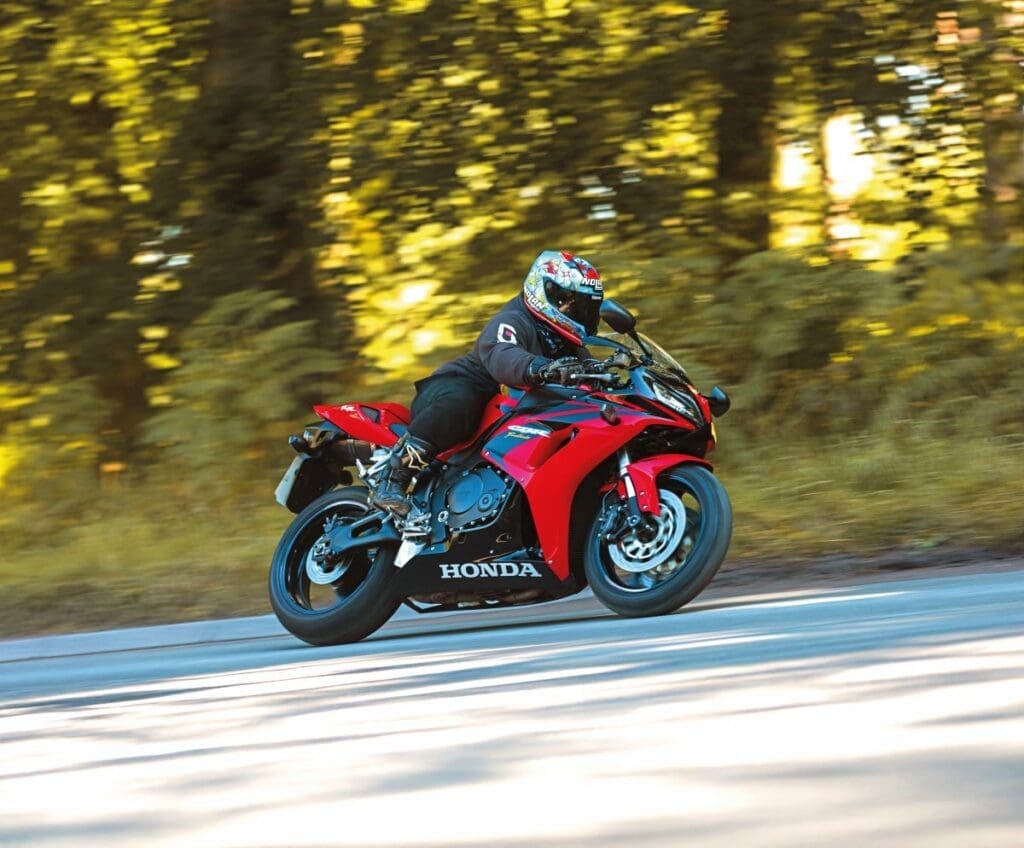
When you finally get going, if you’ve been used to the older model, you WILL notice the extra oomph lower down if you’re wanting a quick getaway. When I’ve ridden these on track (see below) the RR-4/5’s rather bland mid-range has been replaced by something much more ‘pokey’! Little wonder that some owners of the earlier machines would swap out the rear sprocket from a 40-tooth to a 42-tooth item to replicate it…
This motor is an absolute peach, it really is. There are no big lips in power delivery or bumps, but linear-smooth thrust, which is kicked off by that instant urge low-down. If you’re brave enough to hang on to the bike up towards that 12,000 or so red-line you’re a better person than me on Britain’s roads. Out on track though, it’s a real blast. Oh, and, of course, you can adjust that REV shift-light.
Roads are where most of us spend our time, of course, and it is the road manners/handling of this Blade which even out-do that marvellous motor. I’m not going to say I ever felt the difference on the geometry change to this model (Ron did) but the electronic steering damper really helps. Now, while Mr. Haslam used to dislike it on track (he said it would make the bike difficult to steer when on the back wheel) I always loved how composed it made the bike feel over the bumps that you always get on UK roads. In all honesty, the excellent and fully-adjustable suspension married to that HESD damper really makes you think you can make more out of the power you have than compared to, say, the crazier-feeling ZX-10R or GSX-R. Brakes, too, on this model, are refined and improved, thanks I guess to larger discs. They’re not stupidly fierce, but they do deliver the goods when you want to stop quickly from daft speeds. I can’t recall finding them wanting out on track, either – and yes, still no ABS here.
If there’s an overall feeling when riding this bike it’s that it’s almost ‘cosseting’. It’s almost reassuring compared to other litre sports bikes. And that’s the point – ride this in isolation and you won’t want to ride anything else, it’s that confidence inspiring. The Fireblade designers from Baba-san to Hara-san always wanted to create a bike that suited many riders and they did that with the RR-6/7.
If there are any disappointing things about this model of Fireblade, it’s hard to think of one. In fact, about the only one I can come up with is that there isn’t an actual fuel gauge on the bike. Thankfully, the tank is 18 litres and that means that in normal road-riding mode you should see around 130 miles before the warning light comes on.
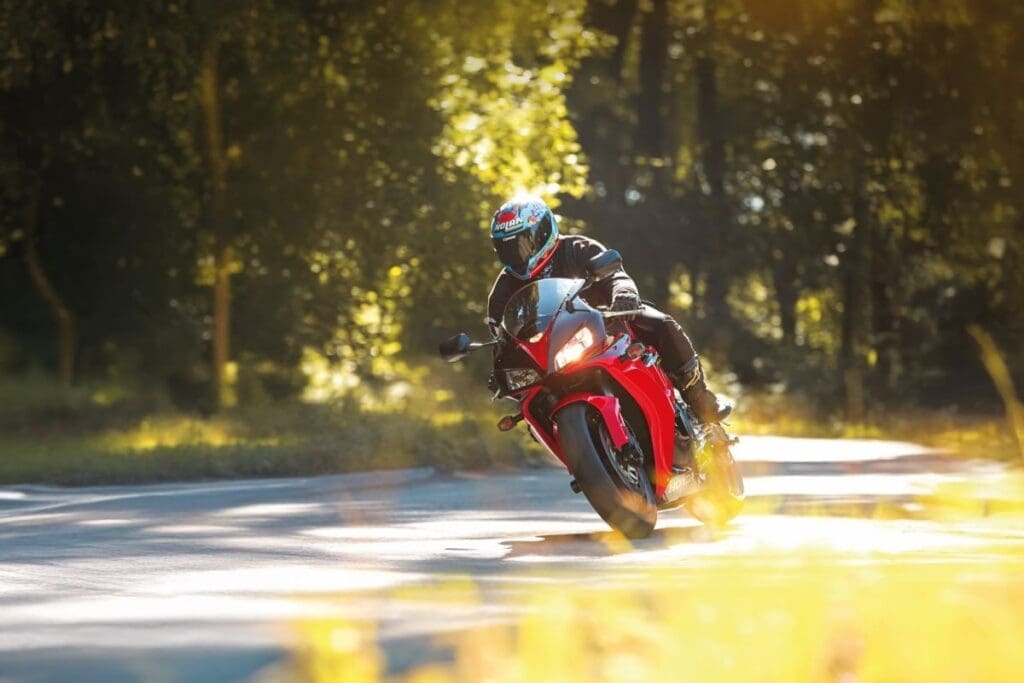
Why it’s the best
Approaching Firstly, just look at it. In any of the UK colours from 2006-2007 it was a class apart. It even came in Repsol colours and a really nice Honda/HRC tri-colour. Secondly, it’s a Honda – so it’s built like a brick sh… (ahem) outhouse. Not many issues ever came to light – apart from a recall on a vent pipe under the tank, some reported cam-chain issues, and some supposedly had generator and regulator/rectifier issues. And that’s about it… Price-wise it’s also a winner. In 2004 the CBR1000RR Fireblade cost £8799 – cheaper than its rivals. In 2006-07 it was £8839-£8937. Today you can see nice RR-6s sneak in at under four grand and with low-ish miles on the clocks. So why buy one over the competition?
The ZX-10R Ninja is breathtaking, but even 20 years on it’s pretty crazy for the road and still feels harsh. The similarly-aged Yamaha YZF-R1 doesn’t look as nice, while the K5 GSX-R1000 was another leap forward for litre-class sports-bikes, but it’s harder to find a nice one. GSX-R owners love tat!
The RR-6 Blade is a well-balanced machine for road use: plenty fast to scare you silly, but wellmannered, comfortable, well-engineered and stylish. I’m now in my 50s and I haven’t quite got sports-bikes out of my system just yet – but if I do take the plunge, the likelihood will be that an RR-6 or 7 will be my first choice. It’s that good…
Bert’s Blades
I’ve owned a fair few 900cc FireBlades, including a 1995 RR-S ‘Urban Tiger’ and the cool black/gunmetal RR-V of 1997, and I still hanker after a 1992/1993 original…
When it came to the 1000cc Blades, I kinda lucked into getting one every year. Well, when I say ‘luck’ I actually ‘worked’ for them. Honda UK asked me to help them write press releases for their motorcycle PR department but they didn’t want to pay me – so instead they ‘loaned’ me a bike which I could also use in any features I was doing. This meant that I got an RR-5, RR-6, RR-7 and RR-8 between 2005-2008.
All of them would be used as everyday machines and (back then) I was also a bit of a track-day addict. The differences between the RR-5 and 6 have been remarked upon in the main text but it’s worth noting the improvements with the RR-8 – if anything the power delivery was even more linear and smooth, and this was in a time of the first ‘switchable’ power settings for wet/dry conditions.
Chief designer of the RR-8, Kyoichi Yoshii, reckoned people left such devices in ‘high power’ mode anyway, so he wanted the power delivery of the RR-8 to be more ‘natural’. He got it spot on. The bike handled as if on rails, too – I was lucky enough to have a blast on one around Jerez back in 2008. But on the whole I preferred the RR-6/7 for ‘feelgood’ factor when you opened the garage door. And that’s important.
Racing CBR1000RR Blades…
For 2004 Honda’s race arm – Honda Racing Corporation – would supply works machines for both Michael Rutter and Ryuichi Kiyonari to take the British Superbike title for Honda.
It was the start of an impressive debut year – even if the overall honours went to John Reynolds and his Suzuki. Rutter would come second in the series behind JR, with Kiyonari in sixth. After such a good first year, 2005 promised much but the title went to the returning Groundwork South- East Racing team and Gregorio Lavilla. By now the BSB Fireblades were called ‘kit’ bikes but with a works four-cylinder motor.
I was lucky enough to get the chance to try out Kiyonari’s Fireblade at a cold and damp Cadwell Park towards the end of 2005, alongside an RR-5 road bike. The difference was like night and day: so much power that it was difficult to even hold on to the thing – oh, and a tricky race-way-up gearbox. I nearly crashed at turn one (Coppice) when I hit a bump and simply held on while the bike wobbled up the hill on to the grass. But what a machine…
It all came together for the Honda CBR1000RR Fireblade, HM Plant Honda and Kiyonari in 2006 when he took the BSB title with 11 wins. He doubled up in2007 with his second title and eight wins. He would return from World Superbike duty in 2010 to take his third BSB title on the (still) HM Plant-backed Blade. The most recent Blade Championship in BSB was back in 2013 when Alex Lowes won the title on his Samsung-backed machine.
In the World Superbike paddock, the Dutch Ten Kate team were already the dominant force in the World Supersport championship by 2004 and they were ready to take the 1000cc Blade into World Superbikes that very year. Not officially supported by Honda at the time, they would develop the Fireblade themselves. And they’d do it well, rider Chris Vermeulen taking a brace of second places at the second round at his home circuit of Phillip Island and the Blade’s first WSB win at Silverstone with more wins at Laguna Seca. They even had an outside chance of the title at the end of the season but the Aussie came fourth overall.
For 2005 Karl Muggeridge joined his countryman Vermeulen in the superbike squad, which saw ‘Muggas’ finish 11th overall and Chris runner-up behind champ Troy Corser and his Suzuki thanks to six wins. By 2006 Vermeulen was in MotoGP and Brit James Toseland was at Ten Kate alongside Muggeridge. Karl would be 12th, while consistency (and three wins) saw Toseland finish second in the title race behind Ducati’s Troy Bayliss.
The World Superbike title – the Honda Fireblade’s only such success – would come in 2007 when Toseland took the title from Nori Haga by just two points at the final round.
